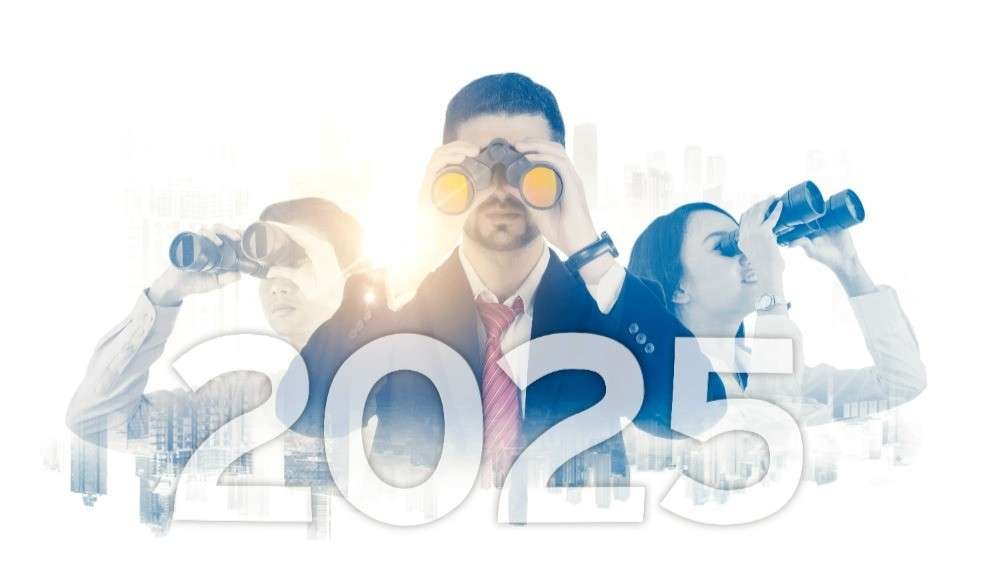I always looked at the world of business as a canvas for innovation, painted with the brushstrokes of visionaries who dared to embrace change. Yet, as we step into 2025, one thing is clear: artificial intelligence is no longer just a stroke on that canvas; it is becoming the entire palette! For those of us in leadership, the opportunities are breathtaking, but so are the challenges. AI is rewriting the rules, and those who fail to adapt quickly enough will find themselves playing a game that no longer exists.
AI is no longer just a wave, it’s the ocean!
Karim Mokhtar

Imagine this: AI systems that not only analyze your data but anticipate your business needs before you’ve even articulated them. AI-driven insights are growing so precise that companies can forecast market trends with the kind of accuracy that was, until recently, reserved for science fiction. Marketing campaigns are no longer static plans but dynamic, evolving dialogues shaped in real-time by machine learning algorithms that adapt to customer behavior. The result? Businesses that listen, respond, and act with a kind of speed and precision that humans simply cannot match.
Yet, what’s even more fascinating is how AI is reshaping the workforce itself…
The rise of intelligent automation is accelerating, but not in the dystopian “robots replacing humans” way some feared. Instead, it’s creating a more collaborative dynamic between human ingenuity and machine efficiency. Employees are being freed from repetitive, soul-draining tasks, allowing them to focus on strategic and creative work. The question for executives is no longer, “How do we reduce costs with automation?” but rather, “How do we harness AI to amplify human potential?”
Let’s not forget how AI is bridging the gaps between industries and geographies. Cross-border collaborations, once laden with bureaucratic and logistical hurdles, are now streamlined through AI-powered tools. From global supply chain optimization to real-time multilingual communication platforms, AI is making the world smaller and business partnerships more seamless. The healthcare and real estate industries, for instance, are experiencing unprecedented transformation. AI-assisted diagnostics and patient care are setting new benchmarks for efficiency and accuracy, while smart property management tools are changing the way assets are valued, marketed, and maintained.
However, let’s not romanticize it, AI is more than an accelerant; it’s truly a disruptor! Privacy concerns, ethical dilemmas, and the potential misuse of AI are looming larger than ever. As leaders, we cannot afford to treat these challenges as afterthoughts. The balance between innovation and integrity will define not only our companies but also our legacies. The decisions we make today will shape how this technology is perceived and regulated tomorrow.
And then there’s the question of talent. The skills that were invaluable in the last decade are rapidly evolving. AI literacy is no longer optional for executives; understanding its implications is as fundamental as reading a financial statement. For C-level professionals, the ability to lead AI-driven transformation isn’t just a nice-to-have, it’s the cornerstone of modern leadership.
So, where does this leave us as we navigate 2025? The answer is simple yet profound: we must embrace a mindset of perpetual learning and adaptability. AI is not a tool we pick up and master; it’s a constantly evolving partner in our decision-making and strategic planning. Leaders must cultivate curiosity, foster collaboration between teams and technologies, and remain relentlessly focused on creating value, not just for shareholders but for employees, customers, and society at large.
AI is no longer just a wave, it’s the ocean!
As we dive deeper, some will swim, others will float, and a few may feel overwhelmed by its magnitude. But one thing is certain: for those willing to lead with clarity, courage, and an open mind, the possibilities are boundless. In 2025, the business world won’t just be using AI; it will be defined by those who understand how to wield it. Let’s make sure we are among them.





